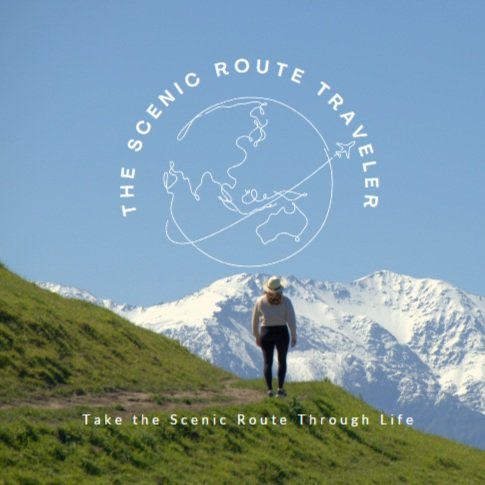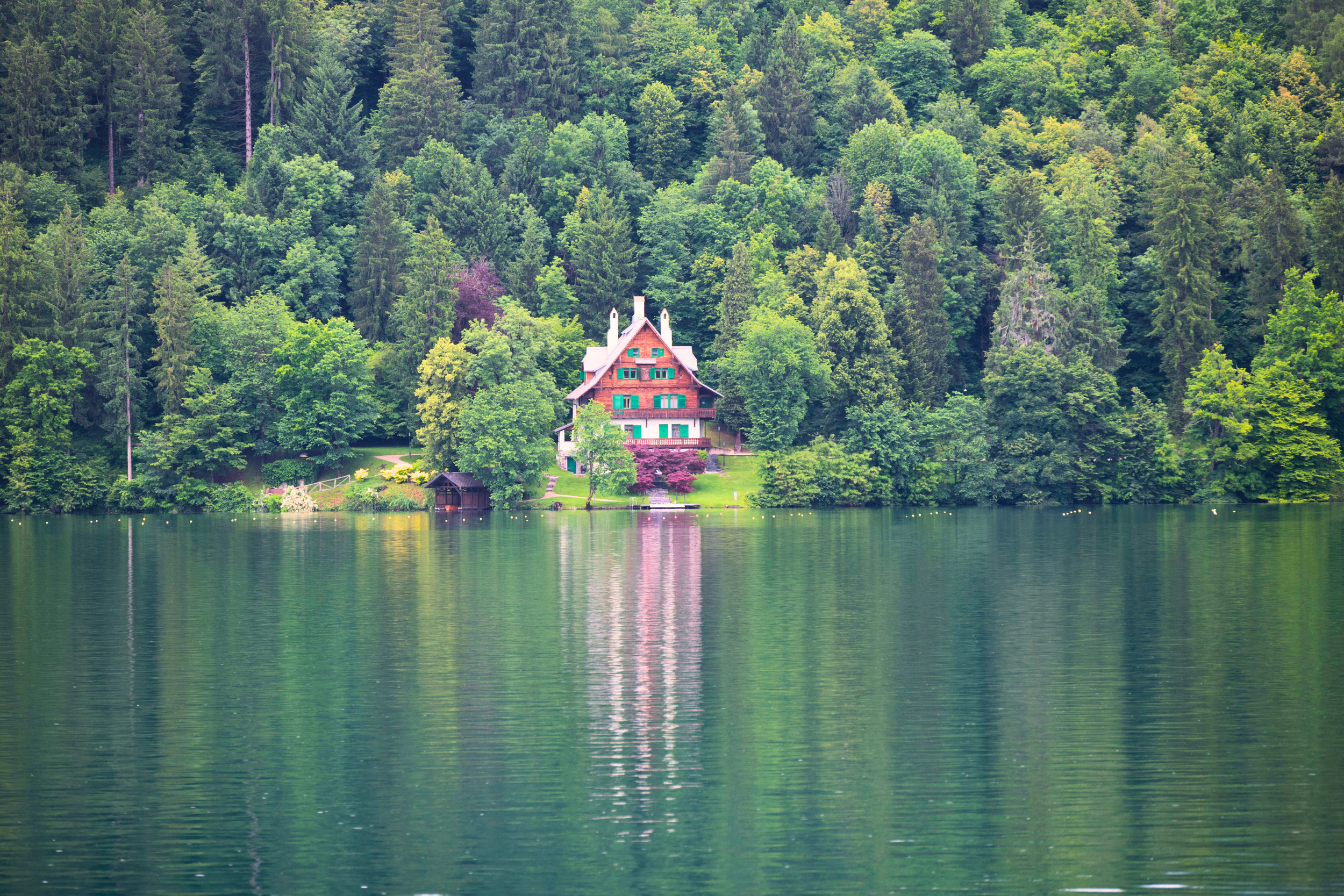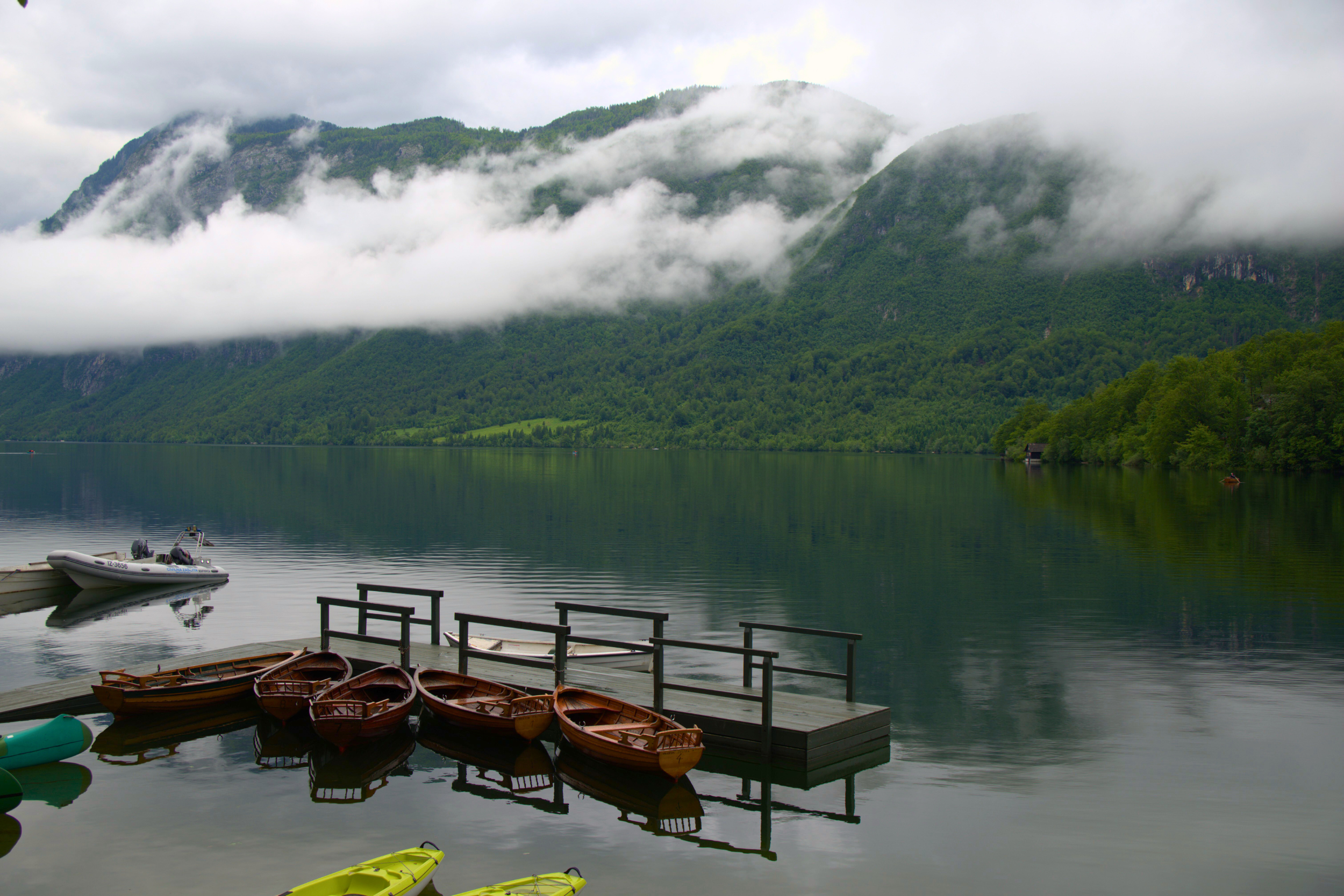
Slovenia Travel Guide: Everything You Need to Know
Table of Contents
About Slovenia
Getting to Slovenia
Where to Stay
Sightseeing and Attractions
Cultural Experiences
Cuisine and Dining
Outdoor Activities
Shopping
Practical Tips
Day Trips and Excursions
Seasonal Considerations
YouTube Video: I Had No Idea Slovenia Was THIS Beautiful (Europe's Secret Gem)
About Slovenia
Slovenia is Europe's hidden gem, a small Alpine country that punches well above its weight in natural beauty and cultural richness. Nestled between Austria, Italy, Hungary, and Croatia, this compact nation offers an incredible diversity of landscapes—from the Julian Alps and emerald rivers to Mediterranean coastlines and mystical caves. With Ljubljana as its charming capital and Lake Bled as its postcard-perfect icon, Slovenia seamlessly blends Central European elegance with Balkan warmth.
Despite being one of Europe's smallest countries at just 20,273 square kilometers, Slovenia boasts remarkable biodiversity with over half of its territory covered by forests. The country is a paradise for outdoor enthusiasts, wine lovers, and those seeking authentic cultural experiences without the crowds of more touristy European destinations. Slovenia's commitment to sustainable tourism and green practices makes it an ideal choice for conscious travelers.
YouTube Video: “I Had No Idea Slovenia Was THIS Beautiful (Europe's Secret Gem)”
Getting to Slovenia
By Air: Ljubljana Jože Pučnik Airport (LJU) is Slovenia's main international airport, located 26 kilometers from the capital. Direct flights connect Ljubljana to major European cities including Munich, Frankfurt, Amsterdam, and Vienna. Budget airlines like Wizz Air and easyJet offer affordable connections. From the airport, shuttle buses run regularly to Ljubljana city center (45 minutes), or you can rent a car for maximum flexibility.
By Train: Slovenia's railway network connects well with neighboring countries. Scenic routes include the train from Venice to Ljubljana (6 hours) passing through gorgeous Alpine scenery, or from Vienna to Ljubljana (6 hours). The Ljubljana to Bled route is particularly beautiful, taking just one hour through countryside dotted with churches and vineyards.
by Car: Slovenia's excellent highway system makes driving a popular option. The country is easily accessible via the A1 motorway from Austria, A2 from Italy, or border crossings from Croatia and Hungary. You'll need a vignette (highway toll sticker) for Slovenian highways, available at border crossings, gas stations, and online. The compact size means you can drive from Ljubljana to any corner of the country within 2-3 hours.
By Bus: FlixBus and other international bus companies operate routes to Slovenia from major European cities. While slower than flying, bus travel offers budget-friendly options and scenic views. The main bus station in Ljubljana serves as the central hub for both international and domestic routes.
Where to Stay
Ljubljana (Capital City)
Luxury:
Hotel Lev: A sophisticated five-star hotel in the heart of Ljubljana with elegant rooms, a spa, and rooftop terrace overlooking the castle.
Grand Hotel Union: Historic luxury hotel dating to 1905, featuring Art Nouveau architecture and world-class amenities in Ljubljana's old town.
Mid-Range:
Hotel Cubo: Modern design hotel with colorful, contemporary rooms and excellent location near Tivoli Park.
City Hotel Ljubljana: Comfortable accommodations with good service and proximity to major attractions and restaurants.
Budget:
Hostel Celica: Unique hostel in a former prison with creatively designed rooms, located in the trendy Metelkova district.
Vila Veselova: Affordable guesthouse offering clean, comfortable rooms and a warm welcome from local hosts.
Lake Bled
Luxury:
Hotel Vila Bled: Former royal residence with stunning lake views, elegant rooms, and access to a private beach.
Grand Hotel Toplice: Historic lakeside hotel with thermal spa facilities and world-class dining.
Mid-Range:
Hotel Park: Family-run hotel offering comfortable rooms and beautiful lake views at reasonable prices.
Pension Mayer: Charming guesthouse with traditional Slovenian hospitality and excellent breakfast.
Budget:
Bled Hostel: Clean, modern hostel with dorm and private rooms, just a short walk from the lake.
Coastal Region (Piran/Portorož)
Luxury:
Hotel Piran: Boutique hotel in Piran's old town with sea views and sophisticated Mediterranean style.
Kempinski Palace Portorož: Five-star beachfront resort with spa, multiple restaurants, and luxurious amenities.
Mid-Range:
Hotel Tartini: Historic hotel in Piran's main square with charming rooms and excellent location.
Sightseeing and Attractions
Ljubljana
Ljubljana Castle: Perched on a hill overlooking the capital, this medieval fortress offers panoramic city views and houses several museums. Take the funicular railway for a scenic ascent, or hike up through the wooded paths. The castle hosts cultural events, exhibitions, and a restaurant with traditional Slovenian cuisine.
Triple Bridge (Tromostovje): Architect Jože Plečnik's masterpiece connects Ljubljana's old town with the modern city center. The unique three-bridge design creates a beautiful pedestrian space perfect for people-watching and photography.
Central Market and Dragon Bridge: The vibrant outdoor market showcases local produce, crafts, and traditional foods. The nearby Dragon Bridge, adorned with four bronze dragons, is Ljubljana's most iconic symbol and a must-see architectural landmark.
Tivoli Park: Ljubljana's largest park offers peaceful walking paths, manicured gardens, and the Tivoli Mansion, which houses art exhibitions. The park extends up Rožnik Hill, providing excellent hiking opportunities right in the city center.
Lake Bled
Bled Island: Take a traditional pletna boat to the only natural island in Slovenia. Climb the 99 steps to the Assumption of Mary Church and ring the wishing bell. The island offers stunning views of the lake and the surrounding Alps.
Bled Castle: Dramatically perched on a 130-meter cliff, this medieval castle houses a museum, printing press, and wine cellar. The castle offers the best panoramic views of Lake Bled and the Julian Alps.
Vintgar Gorge: Just 4 kilometers from Bled, this spectacular gorge features wooden walkways along the Radovna River, leading to the impressive Šum waterfall. The 1.6-kilometer trail through the gorge is one of Slovenia's most beautiful short hikes.
Postojna Cave and Predjama Castle
Postojna Cave: One of the world's most visited show caves, featuring an underground train ride through stunning limestone formations. The 24-kilometer cave system showcases incredible stalactites, stalagmites, and the famous "human fish" (olm) – a rare endemic species.
Predjama Castle: Just 9 kilometers from Postojna Cave, this remarkable Renaissance castle is built into a cliff face. The castle tells the story of the legendary robber baron Erazem and offers guided tours through its fascinating rooms and secret passages.
Piran and the Coast
Piran Old Town: This Venetian-influenced coastal town features narrow medieval streets, beautiful architecture, and stunning sea views. The Tartini Square, named after the famous violinist Giuseppe Tartini, serves as the town's heart.
Sečovlje Salt Pans: Active salt pans that have been harvested for over 700 years. The traditional salt-making process continues today, and the area is now a nature park home to over 290 bird species.
Triglav National Park
Mount Triglav: Slovenia's highest peak at 2,864 meters is a symbol of national pride. While climbing to the summit requires mountaineering experience, the park offers numerous trails for all levels, showcasing Alpine lakes, waterfalls, and pristine wilderness.
Bohinj Valley: Less crowded than Bled, Lake Bohinj offers a more pristine Alpine experience with excellent hiking, swimming, and photography opportunities. The area serves as a gateway to many Triglav National Park trails.
Cultural Experiences
Museums and Galleries
National Gallery of Slovenia: Houses the country's finest art collection, including medieval paintings, Baroque sculptures, and modern Slovenian art. The gallery provides excellent insight into Slovenia's cultural heritage and artistic development.
Slovenian Ethnographic Museum: Showcases traditional Slovenian life, customs, and crafts. The museum's permanent exhibition "I, We, and Others" explores Slovenian identity and cultural diversity.
Museum of Illusions: Interactive museum in Ljubljana featuring optical illusions, holograms, and mind-bending exhibits that are perfect for families and photography enthusiasts.
Traditional Experiences
Wine Tasting: Slovenia has three major wine regions producing excellent wines. Visit the Vipava Valley for fresh whites, Goriška Brda for premium reds, or the Slovenian Istria for Refošk and Malvazija. Many wineries offer tastings and tours with stunning countryside views.
Beekeeping Tradition: Slovenia has a rich beekeeping heritage with beautifully painted beehive panels (panjske končnice). Visit local apiaries to learn about traditional methods and taste exceptional honey varieties.
Traditional Crafts: Explore workshops producing Idrija lace, a UNESCO-recognized craft, or visit pottery studios in Ribnica known for their traditional wooden and ceramic crafts.
Cuisine and Dining
Traditional Slovenian Dishes
Kranjska Klobasa: Slovenia's national sausage, protected by EU designation, made with pork, bacon, and beef. Best enjoyed with sauerkraut, mustard, and fresh bread.
Štruklji: Traditional rolled dumplings with various fillings, including cottage cheese, apple, or walnut. They can be boiled, baked, or fried and are often served as a side dish or dessert.
Potica: Slovenia's national cake, a sweet bread roll with various fillings. The most traditional versions include walnut, poppy seed, or tarragon, often enjoyed during holidays and special occasions.
Jota: Hearty stew from the Karst region made with beans, sauerkraut, potatoes, and smoked pork. This warming dish reflects the Italian influence on Slovenian cuisine.
Where to Eat
Ljubljana:
Gostilna As: Upscale restaurant serving modern interpretations of Slovenian classics with excellent wine pairings.
Odprta Kuhna (Open Kitchen): Friday food market featuring local producers and international cuisine in Ljubljana's city center.
Druga Violina: Social enterprise restaurant serving traditional Slovenian food while supporting people with disabilities.
Lake Bled:
Park Hotel Restaurant: Fine dining with lake views, specializing in seasonal ingredients and traditional techniques.
Bled Castle Restaurant: Dine in medieval surroundings with panoramic views of the lake and Alps.
Coastal Region:
Fritolin pri Cantini: Piran institution serving fresh seafood and traditional Istrian dishes.
Stara Gostilna: Family-run restaurant in Piran offering authentic coastal cuisine with local wines.
Local Drinks
Wine: Slovenia produces exceptional wines, particularly whites like Rebula and Zelen from Goriška Brda, and the refreshing Cviček from Dolenjska region.
Schnapps (Žganje): Traditional fruit brandies made from plums, pears, or apples. Many families produce their own versions, often shared as a welcome drink.
Laško and Union: Slovenia's two major beer brands, both offering light, refreshing lagers perfect for outdoor activities.
Outdoor Activities
Hiking and Mountaineering
Triglav National Park: Offers over 600 kilometers of marked trails ranging from easy walks to challenging Alpine routes. The Seven Lakes Valley (Dolina Sedmerih Jezer) is particularly spectacular, featuring pristine Alpine lakes connected by well-maintained trails.
Velika Planina: High-altitude plateau with traditional shepherd huts and stunning mountain views. The area offers excellent day hikes and the opportunity to experience traditional Alpine pastoral life.
Logarska Valley: One of the most beautiful glacial valleys in Slovenia, perfect for hiking, cycling, and nature photography. The valley features several waterfalls and offers accommodation in traditional mountain farms.
Water Sports
Soča River: Known for its incredible emerald color, the Soča offers world-class white-water rafting, kayaking, and canyoning. The river is suitable for beginners and experts, with numerous outfitters providing equipment and guided trips.
Lake Bled and Bohinj: Perfect for swimming, rowing, and stand-up paddleboarding. Both lakes offer equipment rentals and are ideal for families seeking water-based activities in stunning settings.
Adriatic Coast: Slovenia's 47-kilometer coastline offers opportunities for sailing, diving, and beach activities. The warm Mediterranean waters are perfect for swimming from May through October.
Cycling
Parenzana Trail: Former railway line converted into a cycling and walking path connecting Slovenia, Italy, and Croatia. The 123-kilometer trail offers beautiful countryside views and passes through charming villages and vineyards.
Ljubljana Green Ring: Network of cycling paths around Ljubljana, perfect for exploring the city's green spaces and nearby attractions.
Winter Sports
Kranjska Gora: Slovenia's premier ski resort, offering excellent slopes for all levels and serving as a gateway to Triglav National Park. The resort hosts World Cup ski racing events and provides equipment rental and lessons.
Planica: Famous for its ski jumping hills and the annual Ski Flying World Cup. The valley offers cross-country skiing and winter hiking opportunities.
Shopping
Ljubljana Shopping
Central Market: Daily market featuring fresh produce, local honey, traditional crafts, and seasonal specialties. The market's colonnade, designed by Jože Plečnik, is an architectural masterpiece worth seeing.
Trubarjeva Street: Pedestrian shopping street with international brands, local boutiques, and charming cafes. The street connects the main train station to the old town.
Metelkova District: Alternative cultural quarter with unique shops selling handmade crafts, vintage clothing, and local art. The area comes alive in the evenings with bars and cultural events.
Traditional Crafts and Souvenirs
Idrija Lace: UNESCO-recognized craft producing intricate handmade lace. Visit Idrija to see artisans at work and purchase authentic pieces.
Painted Beehive Panels: Traditional folk art featuring religious and secular scenes. These colorful panels make unique souvenirs and represent Slovenia's rich beekeeping tradition.
Rogaška Crystal: World-renowned crystal glassware produced in Rogaška Slatina. The crystal is known for its exceptional quality and artistic designs.
Piran Salt: Traditional sea salt harvested from the Sečovlje salt pans using methods unchanged for centuries. The salt is prized for its purity and mineral content.
Practical Tips
Currency and Payments
Slovenia uses the Euro (€) as its currency. Credit and debit cards are widely accepted in hotels, restaurants, and shops, but it's advisable to carry some cash for small purchases, market vendors, and rural areas. ATMs are readily available throughout the country.
Language
Slovenian is the official language, but many people speak English, especially in tourist areas, hotels, and restaurants. German and Italian are also commonly understood, particularly in border regions. Learning a few basic Slovenian phrases is appreciated by locals.
Transportation
Public Transport: Ljubljana has an efficient bus system with a rechargeable Urbana card. Intercity buses connect all major destinations, and trains serve popular routes like Ljubljana-Bled and Ljubljana-Maribor.
Rental Cars: Highly recommended for exploring Slovenia's countryside and national parks. International driving permits are required for non-EU citizens. Parking in city centers can be challenging and expensive.
Taxis and Ride-sharing: Taxis are available in major cities, and ride-sharing services like Uber operate in Ljubljana. For rural areas and national parks, having a car is essential.
Safety and Health
Slovenia is one of Europe's safest countries with very low crime rates. Tap water is safe to drink throughout the country. The European Health Insurance Card (EHIC) provides coverage for EU citizens, while travel insurance is recommended for others.
Tipping and Etiquette
Tipping is appreciated but not mandatory. Round up bills or leave 5-10% for good service. Slovenians are generally reserved but friendly. Remove shoes when entering homes, and dress modestly when visiting religious sites.
Best Apps and Resources
Slovenia Travel Guide: Official app with information on attractions, events, and practical tips
ParkNow: For parking payments in Ljubljana
Urbana: Ljubljana public transport app
Booking.com: Widely used for accommodation booking
Windy: Weather forecasting, especially useful for outdoor activities
Day Trips and Excursions
From Ljubljana
Škocjan Caves: UNESCO World Heritage site featuring one of the world's largest underground canyons. The dramatic cave system offers guided tours through spectacular chambers and underground rivers. Allow a full day for the visit including travel time.
Ptuj: Slovenia's oldest town, featuring a hilltop castle, wine cellars, and well-preserved medieval architecture. The town is famous for its Carnival celebration and traditional Kurent masks.
Maribor and Pohorje: Slovenia's second-largest city, surrounded by wine hills and the Pohorje Mountains. Visit the world's oldest vine (over 400 years old) and enjoy hiking or skiing in the nearby mountains.
Kamnik and Velika Planina: Charming medieval town serving as a gateway to the Velika Planina plateau. Take the cable car to the shepherd settlement and enjoy traditional architecture and stunning Alpine views.
From Lake Bled
Ljubljana: Easy day trip to Slovenia's capital, just one hour by train or car. Explore the city's highlights and return to Bled for evening relaxation.
Radovljica: Historic town famous for its beekeeping museum and gingerbread-making tradition. The town's medieval square is one of Slovenia's most beautiful.
Kranjska Gora: Gateway to Triglav National Park, offering hiking opportunities and the beautiful Jasna Lake. In winter, it's Slovenia's premier ski resort.
From the Coast
Škocjan Caves and Lipica: Combine the underground wonders of Škocjan with a visit to Lipica Stud Farm, home of the famous Lipizzaner horses. The farm offers tours and equestrian shows.
Hrastovlje: Small village famous for its 15th-century church featuring the "Dance of Death" fresco, one of the most important medieval art pieces in Slovenia.
Goriška Brda: Slovenia's answer to Tuscany, with rolling hills covered in vineyards and charming villages. Perfect for wine tasting and scenic drives.
Seasonal Considerations
Spring (March-May)
Spring is an excellent time to visit Slovenia as nature awakens from winter slumber. Temperatures range from 10-20°C (50-68°F), making it perfect for hiking and outdoor activities. The famous Bled cream cake tastes even better with fewer crowds around the lake. Wildflowers bloom throughout the country, creating beautiful landscapes for photography. Some high-altitude trails may still have snow, but lower elevations offer excellent hiking conditions.
Summer (June-August)
Peak tourist season brings warm weather with temperatures ranging from 20-30°C (68-86°F). This is ideal for water sports, swimming in lakes, and coastal activities. All hiking trails are open, and mountain huts operate fully. Expect larger crowds at popular destinations like Lake Bled and Ljubljana. Book accommodations well in advance, especially for weekends. The Ljubljana Summer Festival and numerous outdoor concerts make this a culturally rich time to visit.
Autumn (September-November)
Many consider autumn the best time to visit Slovenia. Temperatures are mild (15-25°C/59-77°F), crowds diminish, and the autumn colors create stunning landscapes. Wine harvest season begins, making it perfect for wine tasting tours. Hiking conditions are excellent with clear skies and comfortable temperatures. The tourist season winds down, offering better prices and more authentic experiences with locals.
Winter (December-February)
Winter transforms Slovenia into a snowy wonderland, perfect for skiing, snowshoeing, and winter hiking. Temperatures range from -5 to 5°C (23-41°F). Christmas markets in Ljubljana and other cities create magical atmospheres. Ski resorts operate fully, and thermal spas offer perfect winter relaxation. Some mountain trails may be inaccessible, but winter sports enthusiasts will find excellent conditions. Lake Bled occasionally freezes, creating unique photo opportunities.













